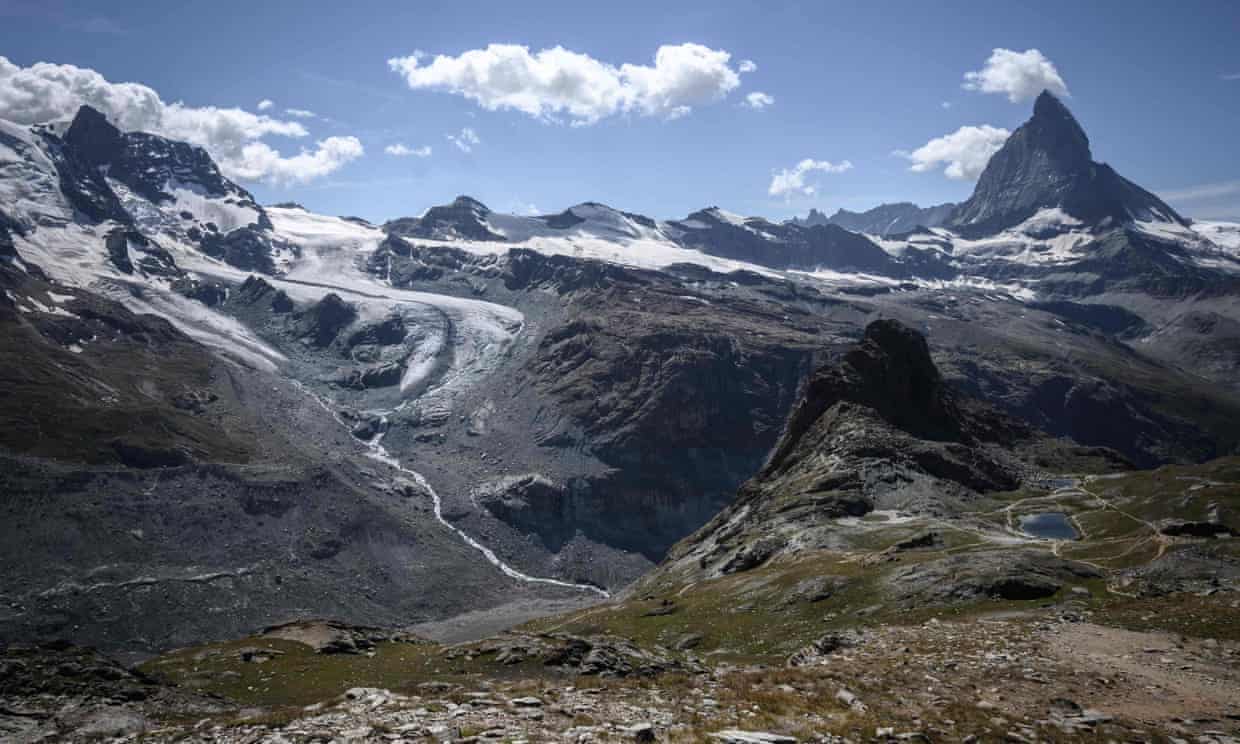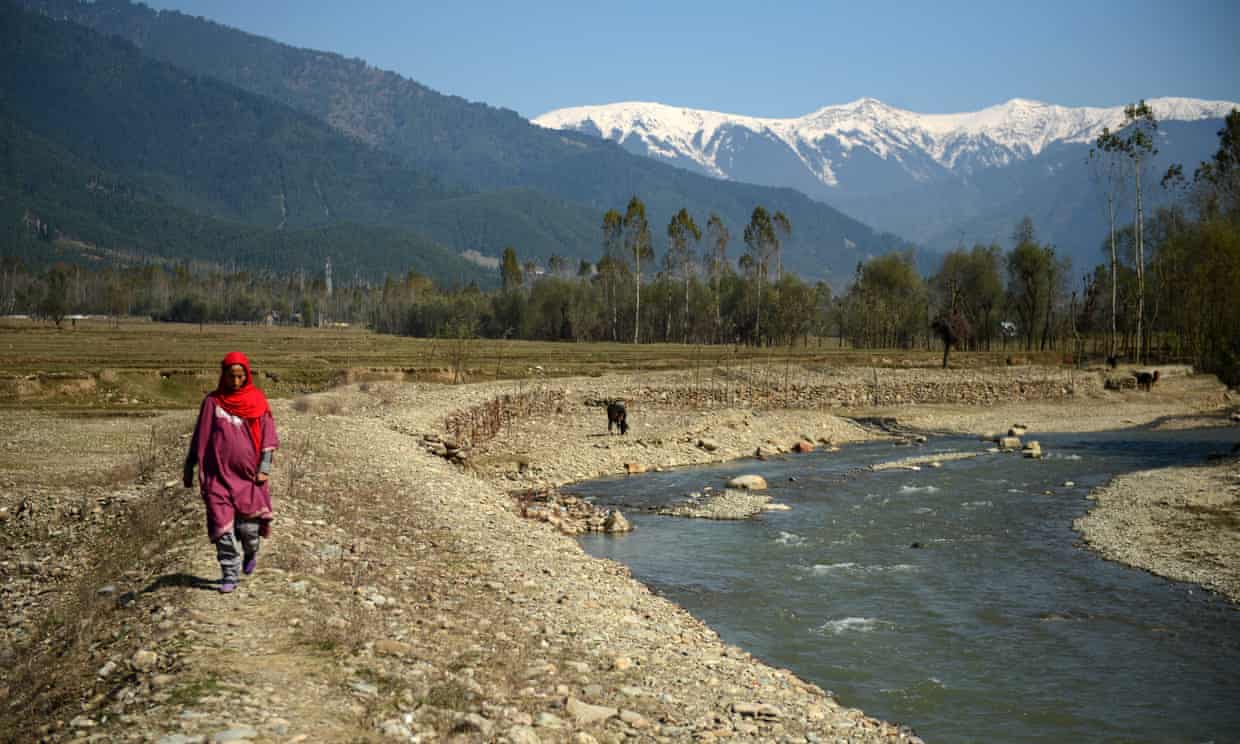Glacier melt contributing more to sea-level rise than loss of Greenland and Antarctic ice sheets, say experts
By Jonathan Watts and Niko Kommenda
The melting of the world’s glaciers has nearly doubled in speed over the past 20 years and contributes more to sea-level rise than either the Greenland or Antarctic ice sheets, according to the most comprehensive global study of ice rivers ever undertaken.
Scientists say human-driven global heating is behind the accelerating loss of high-altitude and high-latitude glaciers, which will affect coastal regions across the planet and create boom-and-bust flows of meltwater for the hundreds of millions of people who live downstream of these “natural water towers”.
Between 2000 and 2019, glaciers lost 267 gigatonnes (Gt) of ice per year, equivalent to 21% of sea-level rise, . The authors said the mass loss was equivalent to submerging the surface of England under 2 metres of water every year.
This was 47% higher than the contribution of the melting ice sheet in Greenland and more than twice that from the ice sheet in Antarctica. As a cause of sea-level rise, glacier loss was second only to thermal expansion, which is prompted by higher ocean temperatures.

The authors found the pace of glacier thinning outside of Greenland and Antarctica picking up from about a third of a metre per year in 2000 to two-thirds in 2019. This is equivalent to an acceleration of 62Gt per year each decade.
The study uses historical Nasa satellite data and new statistical methods to construct three-dimensional topographies going back 20 years and covering 99.9% of the world’s glaciers. The result is the most accurate and comprehensive assessment of the world’s 217,175 glaciers to date.
Scientists said the precision of the data allowed them to be more certain than before that glacier loss is enormous and accelerating. Previous estimates of mass loss were about 20% more negative, but those had an even greater margin of error because they were either extrapolated from ground measurements at a few hundred reference glaciers and a limited coverage of satellite imagery, or based on the study of gravimetric signals which have a coarse resolution.
On average, the paper found glaciers lost 4% of their volume over 20 years. But the picture varied across time and from region to region.
Alaska accounted for 25% of the global mass loss, the Greenland periphery 12% and north and south Canada 10% each. The Himalayas and other parts of high-mountain Asia lost 8%, as did the southern Andes and subantarctic regions.

The Lower Theodul glacier, near the Matterhorn mountain in Switzerland. Photograph: Fabrice Coffrini/AFP/Getty Images
Smaller, lower glaciers did not contribute as much in volume, but they were the most vulnerable to change. The thinning of New Zealand’s glaciers increased seven-fold between 2000-04 and 2015-19. Thinning rates in the European Alps were twice the global average.
The lead author, Romain Hugonnet, of the University of Toulouse, said the data was an urgent warning. “A doubling of the thinning rates in 20 years for glaciers outside Greenland and Antarctica tells us we need to change the way we live. We need to act now,” he said. “It can be difficult to get the public to understand why glaciers are important because they seem so remote, but they affect many things in the global water cycle including regional hydrology, and by changing too rapidly, can lead to the alteration or collapse of downstream ecosystems.”
Living in Switzerland, he feared future generations would not be able to enjoy the Alps as he has done. “It’s beautiful now but it will get more and more dry. If there are no glaciers, there will be less water in times of drought at the end of summer. For the first time, you might not see green grass in Switzerland,” he said. “ The glaciers in the Alps are not thick and are [some of the] fastest melting in the world. That will continue until there is nothing left. How fast depends on different climate scenarios, but at current speed, 80-90% will be gone by 2050. That means we will lose almost everything, except the biggest glaciers.”
His greatest concern was in high Asian mountain ranges, which are the source of rivers such as the Yangtze, Mekong, Salween and Brahmaputra, which support large downstream populations. The paper urges policymakers to design adaptive policies for the billion people who could face water shortages and food insecurity before 2050, as well as for the more than 200 million who live in coastal areas threatened by rising water levels before the end of the century.

A Kashmiri villager walks past what used to be a pond holding drinking water in the village of Chandigam in the Lolab valley in the foothills of the northern Kashmir Himalayas, where glaciers are melting fast. Photograph: Tauseef Mustafa/AFP/Getty Images
“India and China are depleting underground sources and relying on river water, which substantially originates from glaciers during times of drought. This will be fine for a few decades because glaciers will keep melting and provide more river runoff, which acts as a buffer to protect populations from water stress. But after these decades, the situation could go downhill. If we do not plan ahead, there could be a crisis for water and food, affecting the most vulnerable.”
Samuel Nussbaumer, of the World Glacier Monitoring Service (WGMS) and the University of Zurich, was not directly involved in the latest assessment but he said it confirmed trends observed over many decades by ground monitoring and satellites. The WGMS previously reported that rates of glacier mass loss have roughly doubled every decade since the 1970s.
“The new paper will have a big impact. This is the most global, complete study. The gain in new information is huge,” he said. “The rapid change we see now is really interesting from a scientific point of view. Never before in history has change happened this fast.
“But on a personal level, it is sad to see. are very dynamic. If temperatures were to drop, they would regrow. But what is happening today is that human causes are leading to long-term destruction even in these remote regions where there are no humans.”
Source:
Related with SDG 13: Climate action



